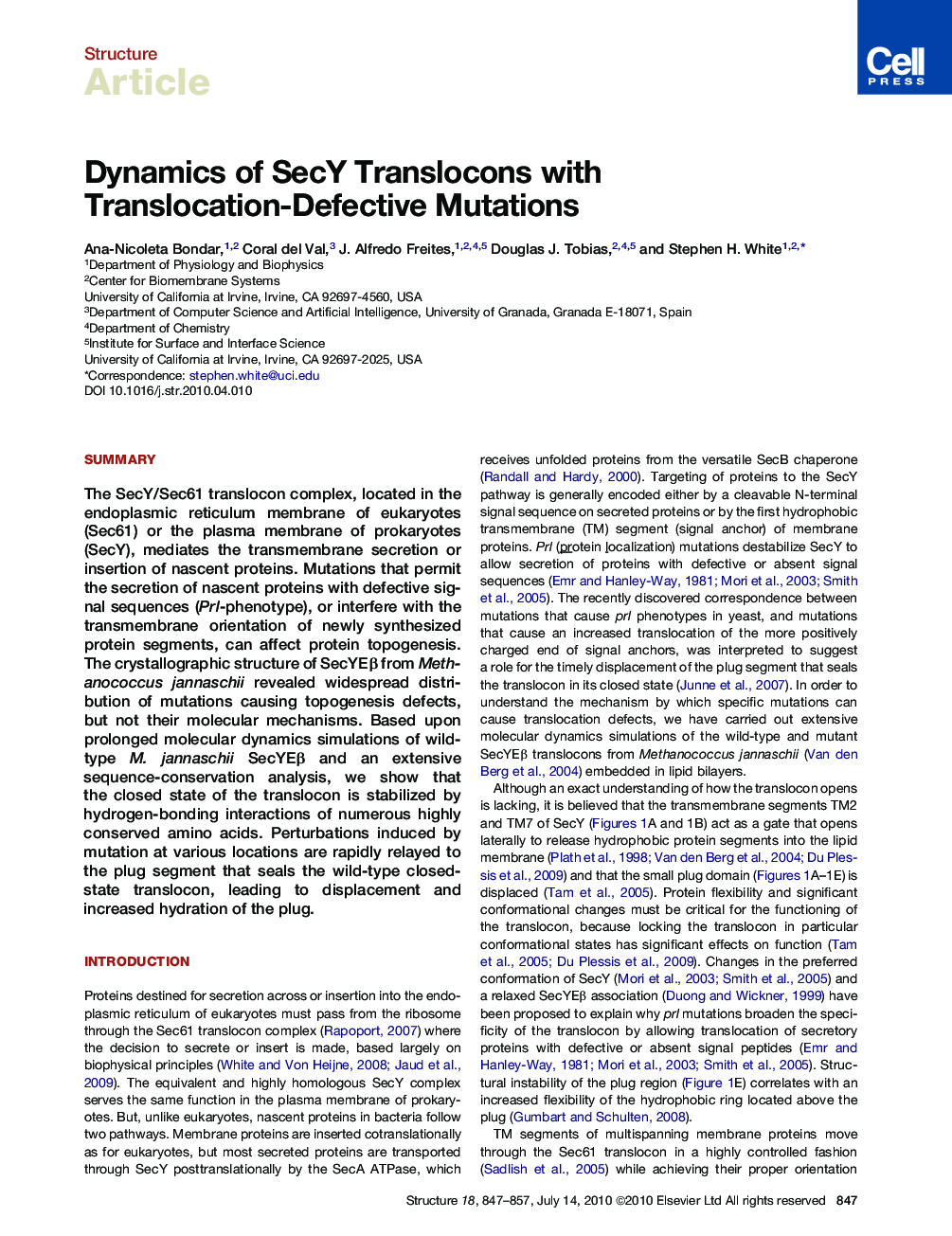| Article ID | Journal | Published Year | Pages | File Type |
|---|---|---|---|---|
| 2029856 | Structure | 2010 | 11 Pages |
SummaryThe SecY/Sec61 translocon complex, located in the endoplasmic reticulum membrane of eukaryotes (Sec61) or the plasma membrane of prokaryotes (SecY), mediates the transmembrane secretion or insertion of nascent proteins. Mutations that permit the secretion of nascent proteins with defective signal sequences (Prl-phenotype), or interfere with the transmembrane orientation of newly synthesized protein segments, can affect protein topogenesis. The crystallographic structure of SecYEβ from Methanococcus jannaschii revealed widespread distribution of mutations causing topogenesis defects, but not their molecular mechanisms. Based upon prolonged molecular dynamics simulations of wild-type M. jannaschii SecYEβ and an extensive sequence-conservation analysis, we show that the closed state of the translocon is stabilized by hydrogen-bonding interactions of numerous highly conserved amino acids. Perturbations induced by mutation at various locations are rapidly relayed to the plug segment that seals the wild-type closed-state translocon, leading to displacement and increased hydration of the plug.
Graphical AbstractFigure optionsDownload full-size imageDownload high-quality image (167 K)Download as PowerPoint slideHighlights► H-bonding amino acids form a network that stabilizes the SecY closed state ► Mutation-induced perturbations are relayed throughout SecY via the network ► Perturbations in plug location and water distribution explain translocation defects ► Conservation pattern of critical H-bonding amino acids depends on the organism
